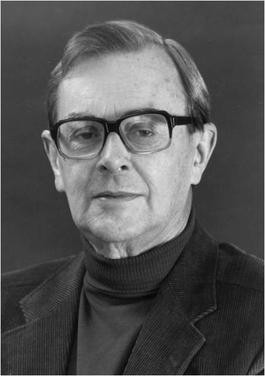Brian Pippard facts for kids
Quick facts for kids
Brian Pippard
|
|
|---|---|

Brian Pippard
|
|
| Born | 7 September 1920 Earl's Court, London, England
|
| Died | 21 September 2008 (aged 88) Cambridge, England
|
| Alma mater | Clare College, Cambridge |
| Awards | Fellow of the Royal Society Hughes Medal (1960) Holweck Medal (1961) Heineman Prize (1969) Onsager Medal (2005) |
| Scientific career | |
| Institutions | University of Cambridge |
| Notable students | Brian David Josephson John Shepherd John Clarke |
| 1st President of Clare Hall, Cambridge | |
| In office 1966–1973 |
|
| Succeeded by | Sir Robert Honeycombe |
Sir Alfred Brian Pippard (born September 7, 1920, died September 21, 2008) was a famous British physicist. He was a top professor at the University of Cambridge and helped start a new college there called Clare Hall, Cambridge. He was also the first President of Clare Hall.
Contents
Brian Pippard's Life and Work
Early Life and Education
Brian Pippard went to school at Clifton College. Later, he studied at Clare College, Cambridge University. He earned his master's and PhD degrees there.
Career at Cambridge University
During World War II, Brian Pippard worked on radar technology. After the war, he started teaching physics at the University of Cambridge in 1946. He moved up the ranks, becoming a lecturer, then a reader. In 1960, he became the first John Humphrey Plummer Professor of Physics.
In 1971, he was chosen to be the Cavendish Professor of Physics. This is a very important role at the famous Cavendish Laboratory. He held this position until 1982.
Important Discoveries in Physics
Pippard made big steps in understanding how metals work. He showed that something called a Fermi surface is real. This surface helps scientists understand how electrons move in metals. He did this by studying how microwaves interact with copper.
He also came up with the idea of "coherence length" in materials called superconductors. Superconductors are special materials that can carry electricity with no resistance at very low temperatures. His ideas helped explain how electricity moves in these amazing materials.
Mentoring a Nobel Prize Winner
Brian Pippard was a teacher and mentor to many students. One of his most famous students was Brian David Josephson. Josephson earned his PhD in Physics in 1964 under Pippard's guidance. In 1973, Josephson won the Nobel Prize in Physics for his discovery of the Josephson effect. This effect is about how electric current can flow through a very thin barrier between two superconductors.
Books by Brian Pippard
Brian Pippard wrote several important books about physics:
- Elements of Classical Thermodynamics for Advanced Students of Physics
- Dynamics of Conduction Electrons
- The Physics of Vibration
He also helped write a large, three-volume encyclopedia called Twentieth Century Physics. At the Cavendish Laboratory, he put together a book called Cavendish Problems in Classical Physics. This book was based on questions from past exams for physics students at Cambridge.

